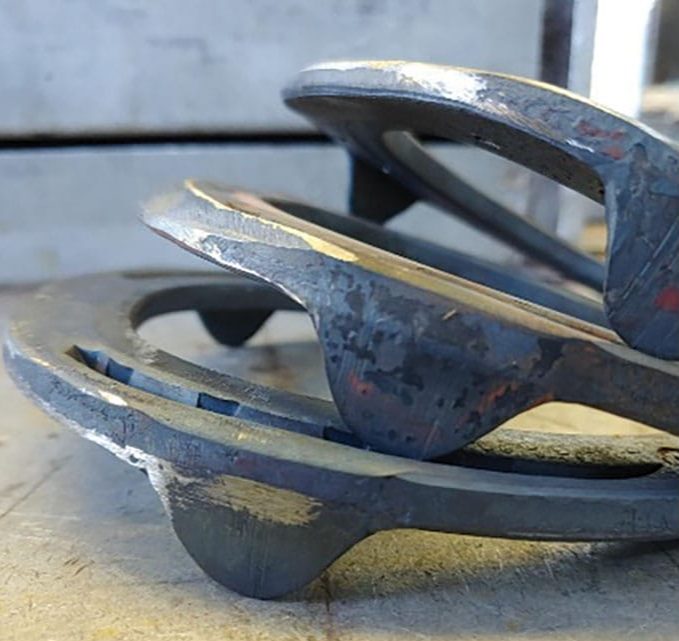References:
- AFA Certification Guide; 5th edition, American /farrier’s Association, Inc.
- Editorial, Design, & production by Ihorseshoe, Inc.
- Adams, O.R. (Ora R. and Stashak. Ted S. 2002. Adams’ Lameness in horses. Williams & Wilkins.
- Anon 2005. MOST COMPREHENSIVE HORSE STUDY EVER REVEALS A NEARLY $40 BILLION IMPACT ON THE U.S. ECONOMY by The American Horse Council.
- BARREY, E. 1990. Investigation of the vertical hoof force distribution in the equine forelimb with an instrumented horseboot. Equine Veterinary Journal.
- Boye, J.K., Thomsen, M.H., Pfau, T. and Olsen, E. 2014. Accuracy and precision of gait events derived from motion capture in horses during walk and trot. Journal of Biomechanics. 47(5), pp.1220–1224.
- Bras, R.J. and Redden, R. 2018. Understanding the Basic Principles of Podiatry. Veterinary Clinics of North America: Equine Practice. 34(2), pp.391–407.
- Burla, J.B., Ostertag, A., Schulze Westerath, H. and Hillmann, E. 2014. Gait determination and activity measurement in horses using an accelerometer. Computers and Electronics in Agriculture. 102, pp.127–133.
- Clayton, H.M., Sigafoos, R. and Curle, R.D. 1991. Effect of three shoe types on the duration of breakover in sound trotting horses. Journal of Equine Veterinary Science.
- Colborne, G.R., Heaps, L.A. and Franklin, S.H. 2009. Horizontal moment around the hoof’s centre of pressure during walking in a straight line. Equine Veterinary Journal.
- Cozzi, B., Ballarin, C., Mantovani, R. and Rota, A. 2017. Aging and Veterinary Care of Cats, Dogs, and Horses through the Records of Three University Veterinary Hospitals. Frontiers in Veterinary Science.
- Duberstein, K.J., Johnson, E.L. and Whitehead, A. 2013. Effects of Shortening Breakover at the Toe on Gait Kinematics at the Walk and Trot. Journal of Equine Veterinary Science.
- Eliashar, E. n.d. An Evidence-Based Assessment of the Biomechanical Effects of the Common Shoeing and Farriery Techniques.
- Van Heel, M.C.V., Van Weeren, P.R. and Back, W. 2006. Shoeing sound Warmblood horses with a rolled toe optimises hoof-unrollment and lowers peak loading during breakover. Handbook of Environmental Chemistry, Volume 5: Water Pollution. 38(3), pp.258–262.
- Holden-Douilly, L., Pourcelot, P., Desquilbet, L., Falala, S., Crevier-Denoix, N. and Chateau, H. 2013. Equine hoof slip distance during trot at training speed: Comparison between kinematic and accelerometric measurement techniques. The Veterinary Journal. 197(2), pp.198–204.
- Hüppler, M., Häfner, F., Geiger, S., Mäder, D. and Hagen, J. 2016. Modifying the Surface of Horseshoes: Effects of Eggbar, Heartbar, Open Toe, and Wide Toe Shoes on the Phalangeal Alignment, Pressure Distribution, and the Footing Pattern. Journal of Equine Veterinary Science.
- Keegan, K.G., Satterley, J.M., Skubic, M., Yonezawa, Y., Cooley, J.M., Wilson, D.A. and Kramer, J. 2005. Use of gyroscopic sensors for objective evaluation of trimming and shoeing to alter time between heel and toe lift-off at end of the stance phase in horses walking and trotting on a treadmill. American Journal of Veterinary Research.
- Kruse, L., Traulsen, I. and Krieter, J. 2012. Effects of Different Riding Surfaces on the Hoof- and Fetlock-acceleration of Horses. Journal of Agricultural Science.
- Lawson, S.E.M., Chateau, H., Pourcelot, P., Denoix, J.-M. and Crevier-Denoix, N. 2007. Effect of toe and heel elevation on calculated tendon strains in the horse and the influence of the proximal interphalangeal joint. Journal of Anatomy. 210(5), pp.583–591.
- Olsen, E., Andersen, P.H., Pfau, T., Olsen, E., Haubro Andersen, P. and Pfau, T. 2012. Accuracy and Precision of Equine Gait Event Detection during Walking with Limb and Trunk Mounted Inertial Sensors. Sensors 2012, Vol. 12, Pages 8145-8156. 12(6), pp.8145–8156.
- Olsen, E., Pfau, T. and Ritz, C. 2013. Functional limits of agreement applied as a novel method comparison tool for accuracy and precision of inertial measurement unit derived displacement of the distal limb in horses. Journal of Biomechanics.
- Pfau, T., Witte, T.H. and Wilson, A.M. 2005. A method for deriving displacement data during cyclical movement using an inertial sensor. Journal of Experimental Biology. 208(13), pp.2503–2514.
- Setterbo, J.J., Garcia, T.C., Campbell, I.P., Reese, J.L., Morgan, J.M., Kim, S.Y., Hubbard, M. and Stover, S.M. 2009. Hoof accelerations and ground reaction forces of Thoroughbred racehorses measured on dirt, synthetic, and turf track surfaces. American Journal of Veterinary Research. 70(10), pp.1220–1229.
- Starke, S.D. and Clayton, H.M. 2015. A universal approach to determine footfall timings fromkinematics of a single foot marker in hoofed animals. PeerJ. 2015(3).
- Stutz, J.C., Vidondo, B., Ramseyer, A., Maninchedda, U.E. and Cruz, Antonio M 2018. Effect of three types of horseshoes and unshod feet on selected non-podal forelimb kinematic variables measured by an extremity mounted inertial measurement unit sensor system in sound horses at the trot under conditions of treadmill and soft geotextile s. Veterinary Record Open. 5(1), p.e000237.
- Stutz, J.C., Vidondo, B., Ramseyer, A., Maninchedda, U.E. and Cruz, Antonio M. 2018. Effect of three types of horseshoes and unshod feet on selected nonpodal forelimb kinematic variables measured by an extremity mounted inertial measurement unit sensor system in sound horses at the trot under conditions of treadmill and soft geotextile su. Veterinary Record Open.
- Willemen, M.A., Savelberg, H.H.C.M., Jacobs, M.W.H. and Barneveld, A. 1996. Biomechanical effects of rocker‐toed shoes in sound horses. Veterinary Quarterly. 18(sup2), pp.75–78.
- Witte, T.H. 2004. Determination of peak vertical ground reaction force from duty factor in the horse (Equus caballus). Journal of Experimental Biology.









Post a comment
Report Abusive Comment